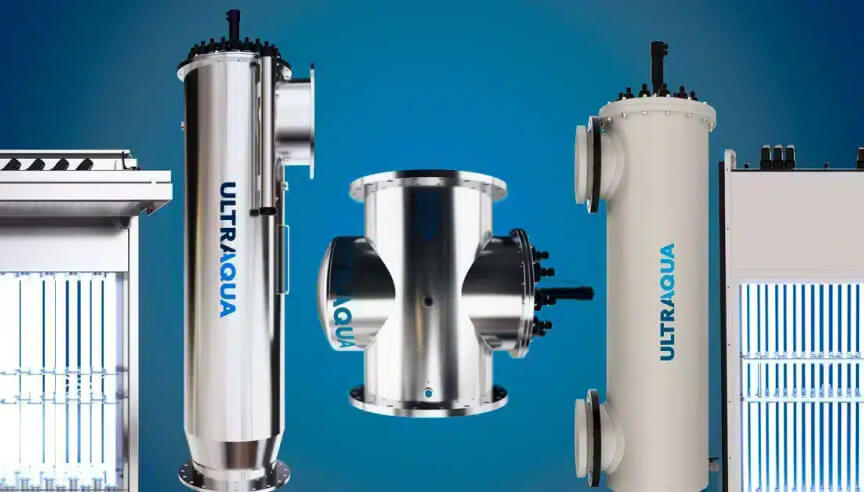Key water parameters when selecting an UV disinfection system

Key Water Parameters to Consider When Choosing an Ultraviolet Disinfection System
Ultraviolet (UV) disinfection systems are an effective method for treating water by neutralizing harmful microorganisms. However, the success of a UV system largely depends on various water parameters. Understanding these parameters is crucial for selecting the appropriate UV disinfection system and ensuring its optimal performance. Here are the key water parameters to consider when choosing a UV disinfection system.
UV Transmittance (UVT)
UV transmittance, often expressed as a percentage, measures the amount of UV light that can pass through the water. High UVT values (closer to 100%) indicate that the water is clear and allows more UV light to penetrate, improving the effectiveness of the disinfection process. Conversely, low UVT values mean that the water contains substances that absorb or scatter UV light, reducing its efficacy. UVT is typically measured at a wavelength of 254 nm, the most effective wavelength for disinfection.
Turbidity
Turbidity refers to the cloudiness or haziness of water caused by the presence of suspended particles. High turbidity can shield microorganisms from UV radiation, making disinfection less effective. It is measured in Nephelometric Turbidity Units (NTU), and for effective UV disinfection, water should generally have a turbidity level below 1 NTU. Pre-treatment processes such as filtration may be required to reduce turbidity before the water enters the UV system.
Water Hardness
Water hardness, caused by high concentrations of calcium and magnesium, can lead to scaling on the quartz sleeves that protect UV lamps. This scaling can reduce the transmission of UV light and decrease the system’s efficiency. Hardness is usually measured in milligrams per liter (mg/L) of calcium carbonate (CaCO3). Depending on the hardness level, pre-treatment using water softeners might be necessary to prevent scaling and maintain optimal UV system performance.
Iron and Manganese Concentrations
Iron and manganese can significantly impact UV disinfection systems. These metals can form deposits on the quartz sleeves, blocking UV light and reducing disinfection efficiency. Iron concentrations above 0.3 mg/L and manganese concentrations above 0.05 mg/L can cause problems. Pre-treatment methods such as oxidation and filtration are often employed to remove these metals before UV disinfection.
Organic Matter
The presence of organic matter in water, measured as total organic carbon (TOC) or dissolved organic carbon (DOC), can also affect UV disinfection. Organic compounds can absorb UV light, reducing the amount of UV radiation available for disinfection. High levels of organic matter may require additional treatment steps to improve UV transmittance and ensure effective disinfection.
pH Level
The pH level of the water can influence the performance of the UV disinfection system and the overall stability of the water treatment process. While UV disinfection itself is relatively unaffected by pH, the effectiveness of any pre-treatment processes and the stability of other water treatment chemicals can be pH-dependent. Typically, a pH range of 6.5 to 8.5 is considered optimal for most water treatment processes.
Microbial Load
The type and concentration of microorganisms present in the water determine the required UV dose for effective disinfection. Different microorganisms have varying levels of resistance to UV light. For example, viruses generally require a higher UV dose than bacteria. Conducting a microbial analysis of the water helps in designing a UV system that delivers the appropriate dose to achieve the desired level of disinfection.
Flow Rate
The flow rate of the water through the UV disinfection system is a critical parameter that impacts the contact time between the UV light and the water. Higher flow rates require more powerful UV systems or multiple lamps to ensure that all water receives adequate UV exposure. Flow rate is typically measured in gallons per minute (GPM) or liters per minute (LPM).
Selecting the right UV disinfection system involves careful consideration of various water parameters, including UV transmittance, turbidity, water hardness, iron and manganese concentrations, organic matter, pH level, microbial load, and flow rate. Thorough analysis and understanding of these parameters ensure that the chosen UV system will be effective in providing safe, disinfected water. Proper pre-treatment and maintenance are also essential to maintain the efficiency and longevity of the UV disinfection system.
